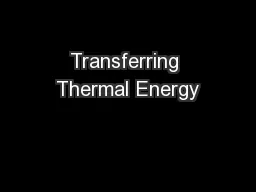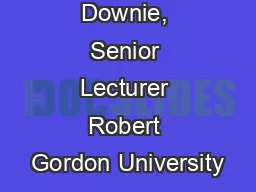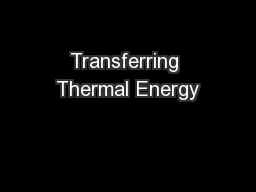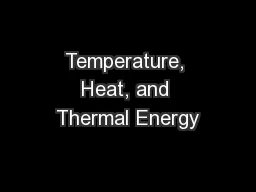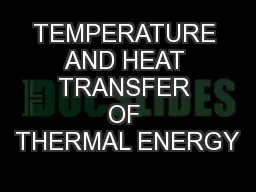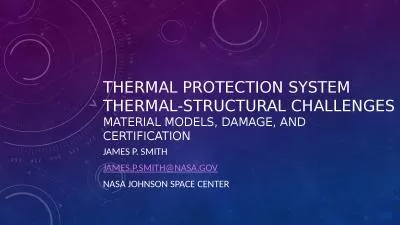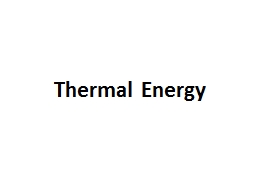PPT-Transferring Thermal Energy
Author : kittie-lecroy | Published Date : 2016-07-30
Chapter 6 Section 2 Before the video Get out a sheet of paper Write an example of each type of thermal energy transfer discussed in the video Bill Nye Clip After
Presentation Embed Code
Download Presentation
Download Presentation The PPT/PDF document "Transferring Thermal Energy" is the property of its rightful owner. Permission is granted to download and print the materials on this website for personal, non-commercial use only, and to display it on your personal computer provided you do not modify the materials and that you retain all copyright notices contained in the materials. By downloading content from our website, you accept the terms of this agreement.
Transferring Thermal Energy: Transcript
Download Rules Of Document
"Transferring Thermal Energy"The content belongs to its owner. You may download and print it for personal use, without modification, and keep all copyright notices. By downloading, you agree to these terms.
Related Documents

